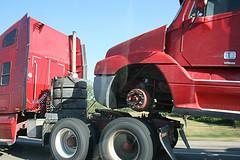Datagrama
 Figure 1 Stack OSI and TCP/IP Source: 16 1.1.1 Paper of each layer Layer of Application: This layer makes the communication between applicatory and the protocol of transport. It to provide has supported to some types of services as remote access the archives, e-mail, interface with the user among others. Layer of Transport: It is of responsibility of this layer to catch the data sent by the application layer and to transform them into packages (datagrama) that they will be repassed the Internet layer. Also it is part of the paper of this layer to manage and to synchronize the connections between hosts of origin and destination. Layer of Internet: This layer adds to the datagrama information on the routes that will go to cover to arrive at its destination, in other words it is responsible for the roteamento of packages. Layer of Interface with the net: This layer receives the datagrama from the Internet layer it sends and it in form of picture through the net, these pictures are bits that are sent through environment, or for air, laser, infra-red ray in the case of the nets without wire. 1,2 Wireless nets the world became each more mobile time, becoming half traditional of work in net in recent years insufficient to carry through to face new challenges taxes for our style of collective life. The user hardwired to a cabeada net is with its drastically reduced movement, in contrast of the nets without wire that allows a free movement in the net of the user.
Figure 1 Stack OSI and TCP/IP Source: 16 1.1.1 Paper of each layer Layer of Application: This layer makes the communication between applicatory and the protocol of transport. It to provide has supported to some types of services as remote access the archives, e-mail, interface with the user among others. Layer of Transport: It is of responsibility of this layer to catch the data sent by the application layer and to transform them into packages (datagrama) that they will be repassed the Internet layer. Also it is part of the paper of this layer to manage and to synchronize the connections between hosts of origin and destination. Layer of Internet: This layer adds to the datagrama information on the routes that will go to cover to arrive at its destination, in other words it is responsible for the roteamento of packages. Layer of Interface with the net: This layer receives the datagrama from the Internet layer it sends and it in form of picture through the net, these pictures are bits that are sent through environment, or for air, laser, infra-red ray in the case of the nets without wire. 1,2 Wireless nets the world became each more mobile time, becoming half traditional of work in net in recent years insufficient to carry through to face new challenges taxes for our style of collective life. The user hardwired to a cabeada net is with its drastically reduced movement, in contrast of the nets without wire that allows a free movement in the net of the user.
The way that provides this is the radio waves, and the computer networks that use this way for transmission of data are called nets wireless that it means net without wire. The radiofrequencia signals also are used stop transmission of data in radio stations, TVs and operators of cellular telephony. Had its easy installation and maintenance, this type of technology comes more being each used time in such a way in companies, offices how much in 17 domestic users and etc.
Tags: Technology
